By Justin Gerard
Most of the following test pieces were done between client projects. They are all victims of a continuing campaign whose goal is a better understanding of the mediums available to the contemporary illustrator.
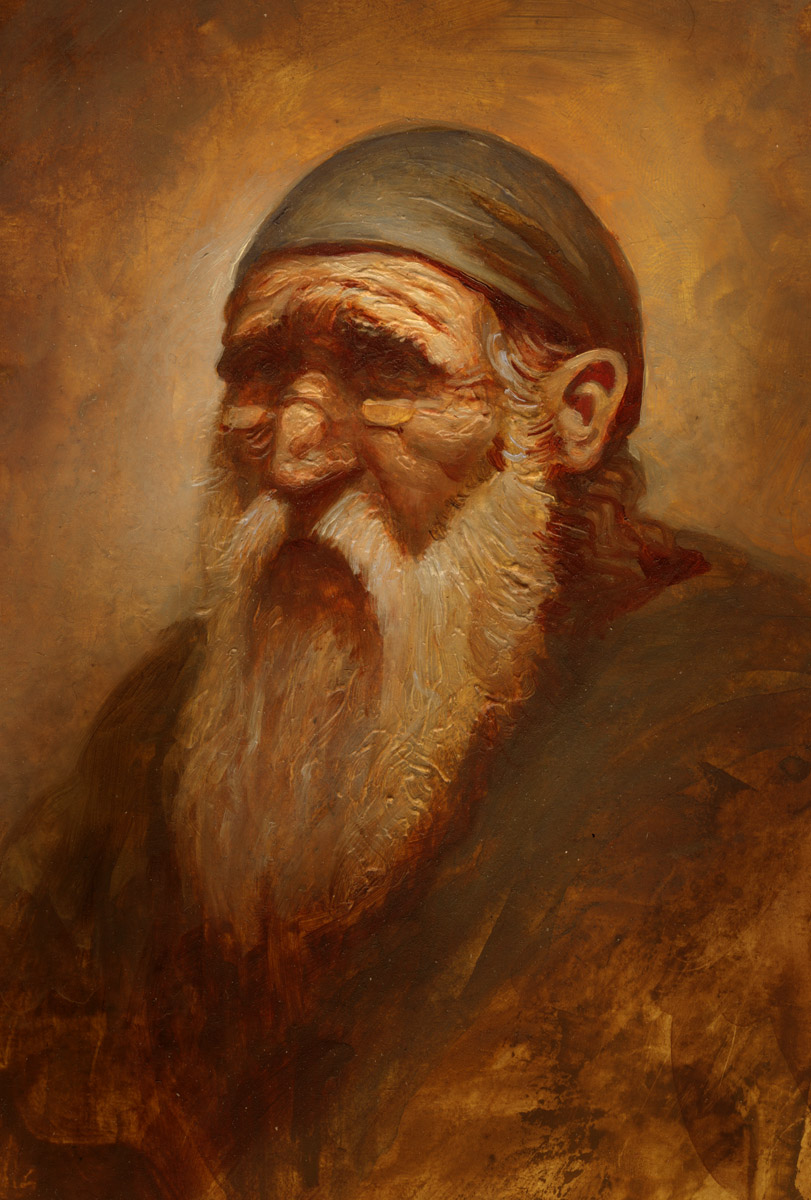
While others seem to give rather poor results:
Both cases help lead to a better understanding of the tools available, and how to use them.
This quest for understanding is complicated enough with the wide array of classic painting mediums that artists have used in the past and that are still available, but to make it even more complex, modern paint manufacturers add new mediums to this list every year.
Holbein has released an acrylic paint that can be lifted out after it has dried.
While many of these new products may be just marketing fluff, some of them are quite useful and provide the artist with materials that are more archival, faster-drying and safer to use than tools of the past.
A critic of this approach might suggest that this chronic experimenting is a misuse of one’s artistic energy. That the artist’s energy is better placed in slowly perfecting his skills with a particular medium over the course of a career.
And truly, some of the greatest contemporary master’s techniques are stunning in their straight-forward simplicity. Paul Bonner, whose amazing work looks like it must involve every medium ever conceived of, as well as unimaginable dark powers, says merely that, “Mostly I just mix up some watercolor on a dinner plate and start painting.”
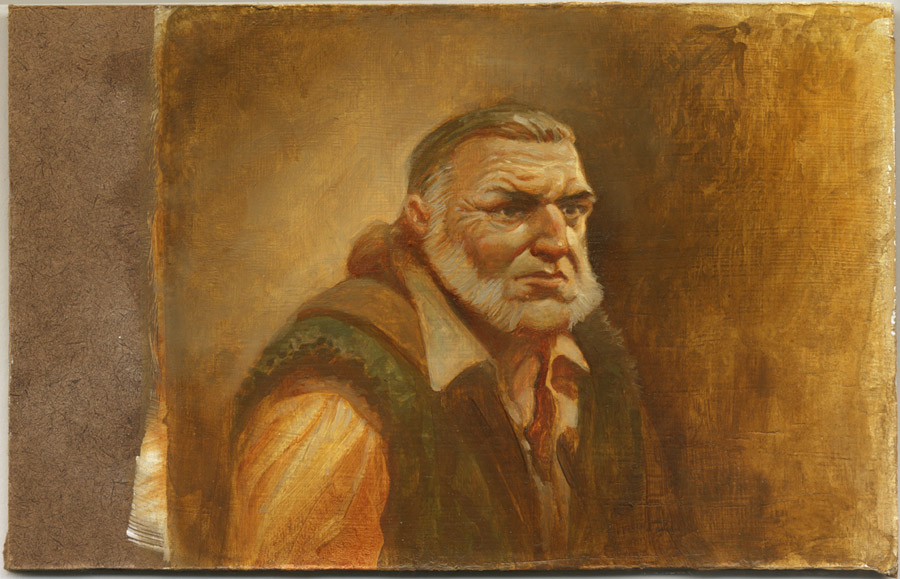
Our critic might also suggest that this sense of chronic experimenting could lure the artist into believing in “silver bullets” that can somehow make up for deficiencies in drawing ability and craftsmanship.
We hear that an artist used some exotic medium and think, ‘if only I had that exotic medium, my work would look as good as his.’ Those of us who’ve tried this experiment are familiar with its generally dismal results. A special medium can offer small comfort to a poor composition.
However, while we must admit that the silver bullet is perhaps the wrong way of looking at it, there is something to be said for understanding the tools available to the contemporary artist.
And we may site examples like James Gurney, a painter who actually does appear to know a vast amount about every medium ever conceived of and uses each of them as necessary to achieve his artistic goals.
Not only does recording the steps help me to remember how I did a particular piece, but it also helps me remember not to shoot myself in the face when I am half-way through another piece executed in the same manner. Often at the half-way point a piece reaches what some illustrators call “The Ugly Stage” where if the artist doesn’t have a firm knowledge of how the piece will look at the end of this stage, he may literally kill himself.
While these experiments are not always helpful, and can result in some dismal failures, I find them extremely helpful in sorting which tools work for me and which tools don’t.


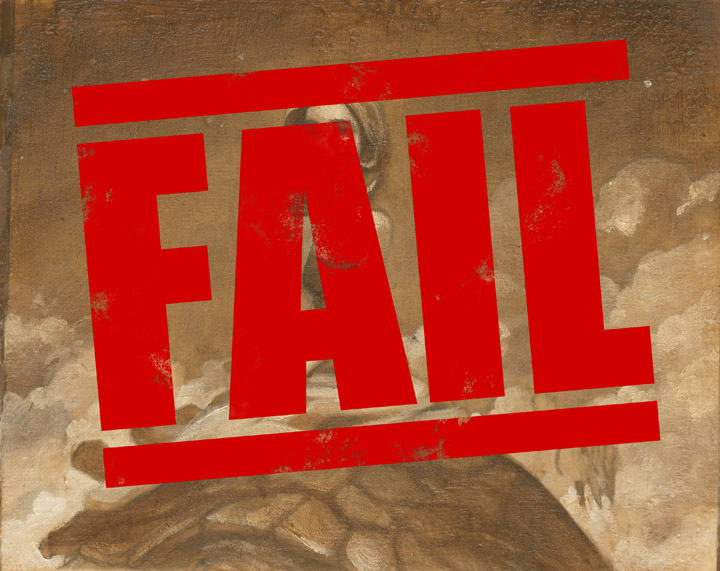
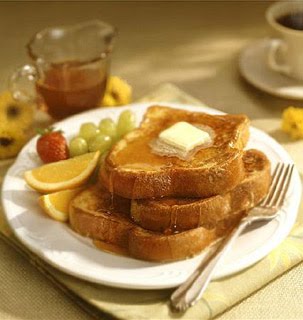
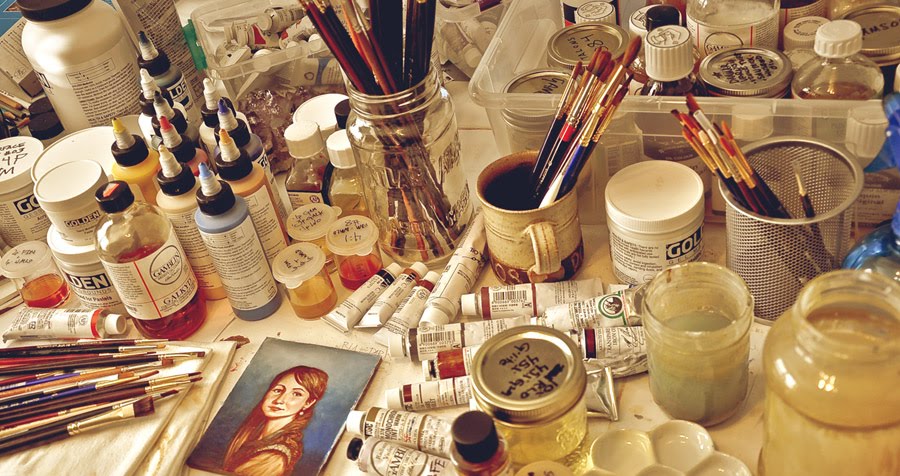
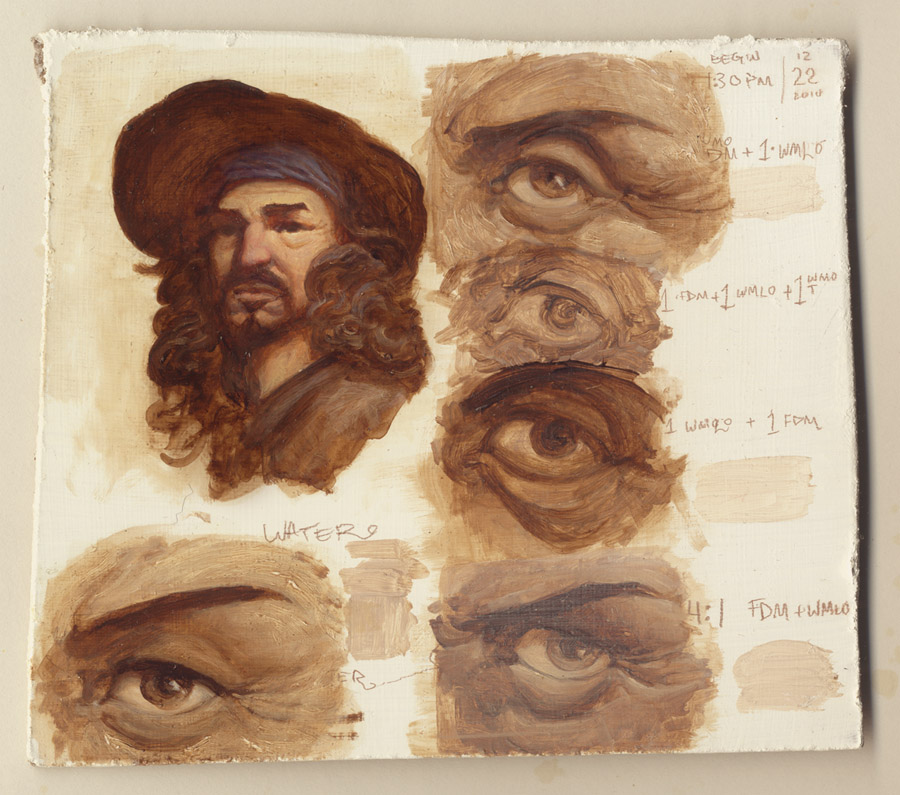
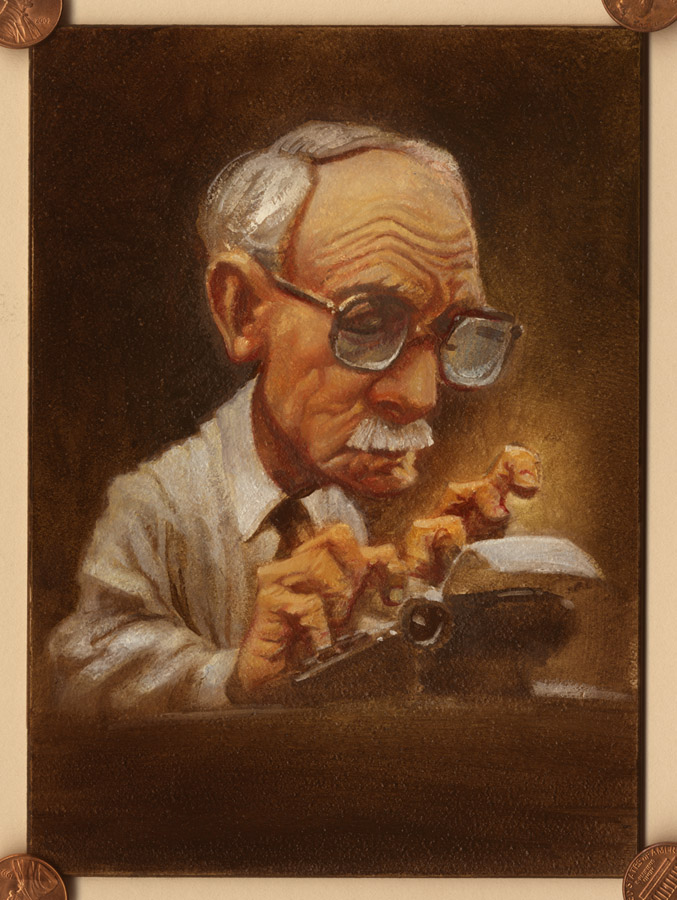
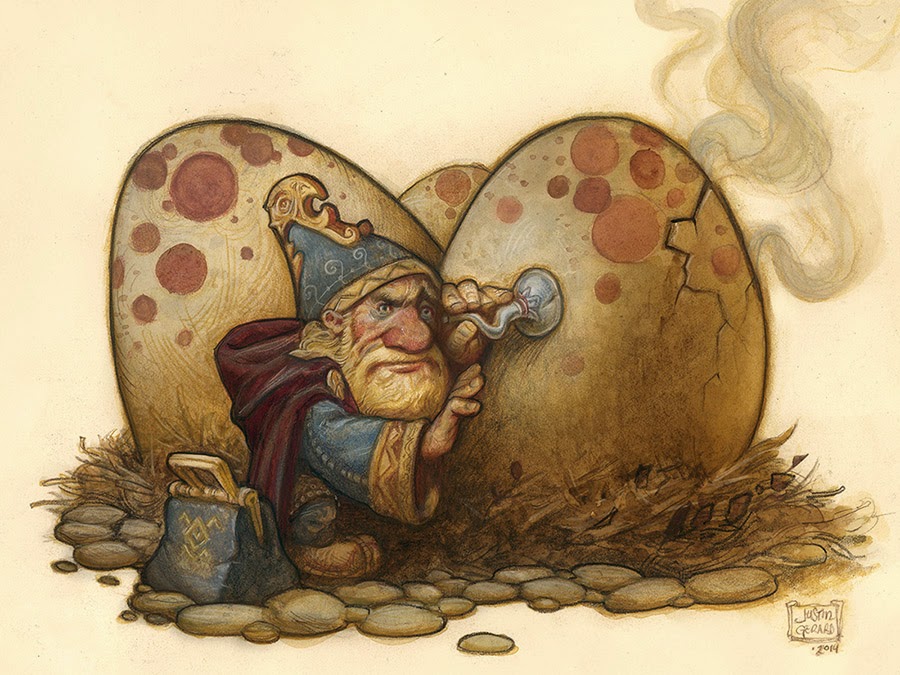
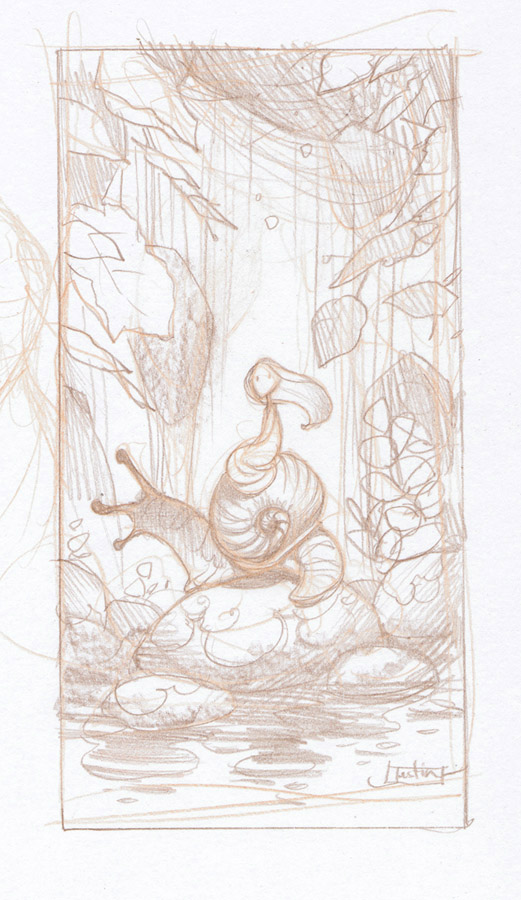
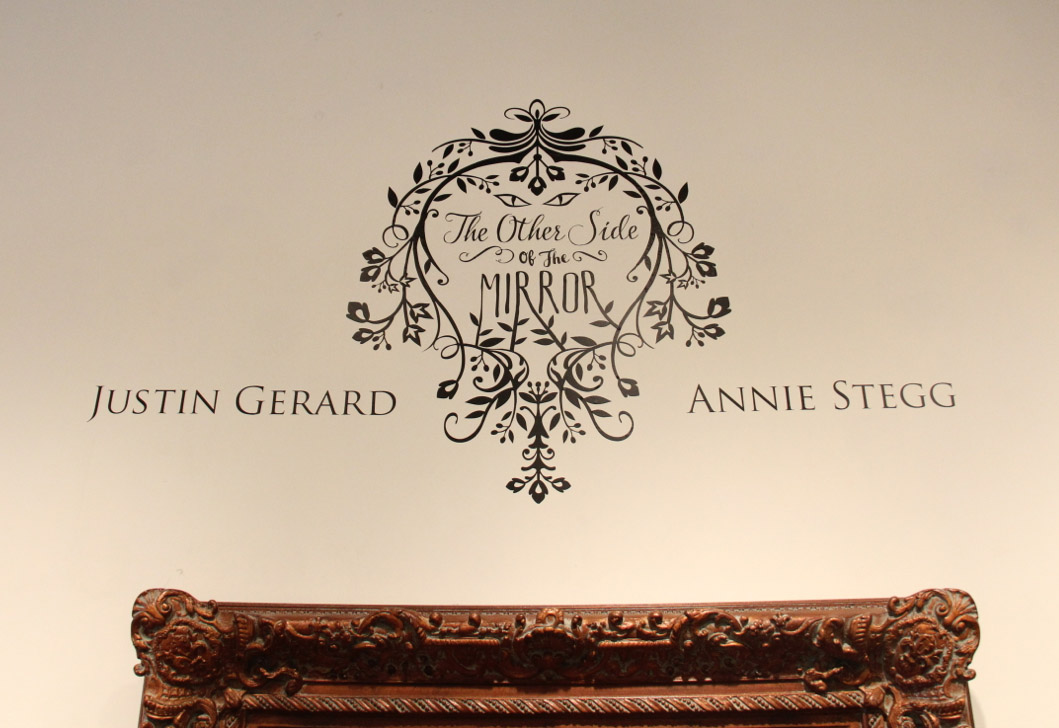
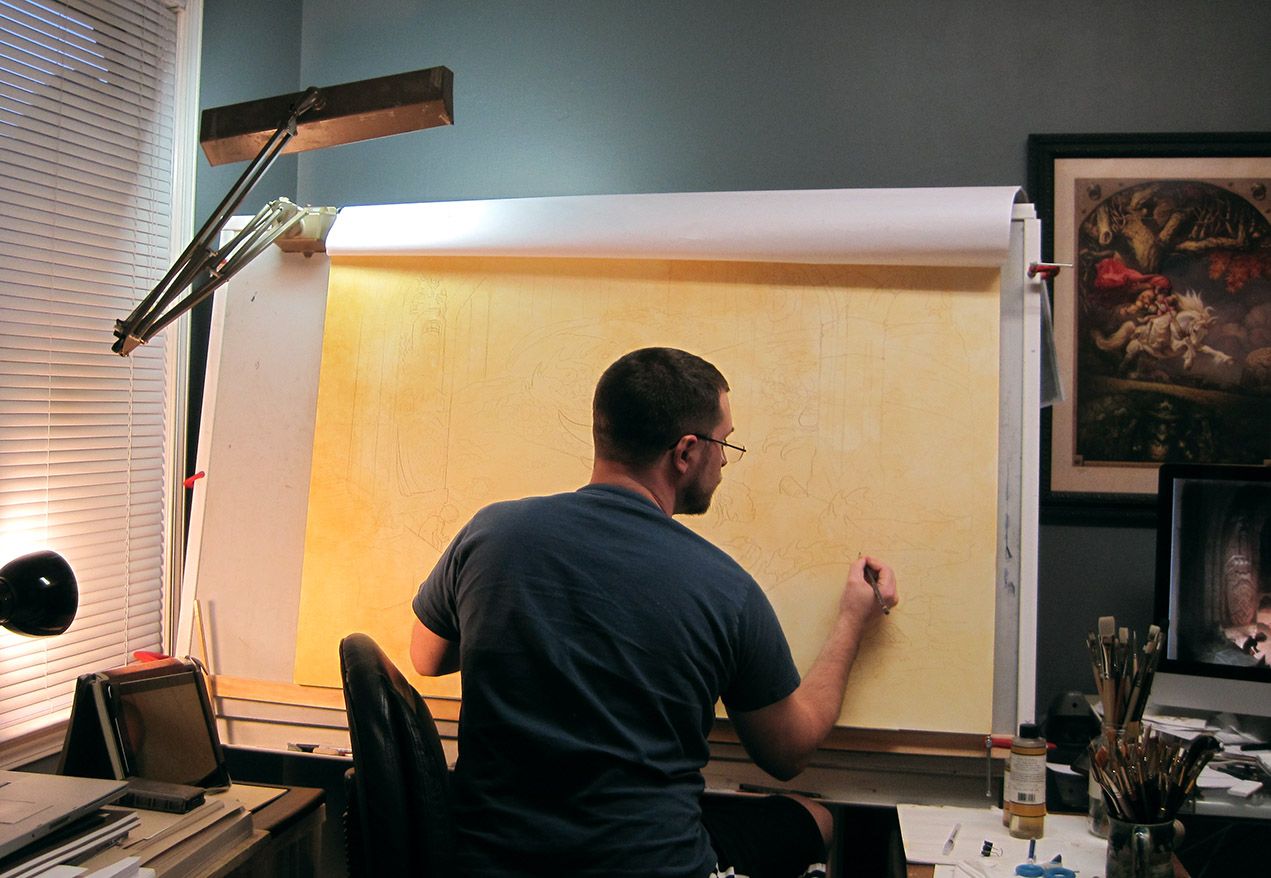
Justin,
Great post! I am also a chronic experimenter. There must be something about the creative mindset that lusts for serendipity and this benefits from experimentation. You seem to have a very thorough approach to it and your work doesn't appear to be affected by it in the least. I suppose it depends on how much time is spent balanced against the benefits. Thanks for the precious insights!
– Joey
Nice article! I am finding myself experimenting with different art methods at the moment to hopefully find the right fit for me . Thanks for sharing!
Great post, Justin. That table full of materials with the tiny painting is a thing of beauty.
Can i get a cliffnote of what “MDF” stands for?
Scott, MDF is “medium-density fiberboard.” It's a stronger form of particle board available at any home improvement store that carries lumber (in the US at least).
Ahhh the ugly stage, it always makes me smile when I read things and think “ahh, so it's not just me”.
It's funny how you can experiment with different tools traditionally, I'm trying to experiment with digital tools too.
I think this is a brilliant post, Justin.
Your devotion to exploration is exactly what I envy about you.
I always hate myself for not trying out more methods.
I've still never even used watercolors if you can believe it.
I honed in on a method early, and once I got it working, I just never seemed to deviate.
Since my results were consistent, I never felt the incentive.
But now that I am more confident in my abilities, I want to try new styles which would be better served in different media… and I feel like it's too late to make the switch.
RE: Dan,
It's only too late to try something new if you tell yourself it's too late.
And don't think of it as making a switch. You can play with watercolors or digital or crayolas while keeping oils as your main medium. You may even find that playing with something new will better inform your primary medium.
@Jobot:
I still experiment a little for myself.
The real trouble lies in making that shift professionally.
Clients have come to expect a certain look from me, and thus hire me for that specific look.
I can't just change styles overnight.
I need to find a way to slowly gravitate toward it.
Wonderful post!
Sometimes they work and sometimes you end up wasting good paint but it's certainly worth it in the end. Often I come up with novel ways of achieving similar effects to that of my favourite artists which in my book means something's going right.
Dan,
I feel your pain on trying to make a shift professionally. It does seem that in many ways switching methods isn't altogether practicable when trying to serve clients.
I am hoping that the ideas and sensibilities within the art can transcend the means of its execution So that it doesn't matter which medium it is in, so long as the final result looks good as the rest of the work in your portfolio.
But like you pointed out, this just isn't always practicable and I can sympathize with art directors who aren't keen on their cover seeming like some kind of wild experiment when compared with the rest of your portfolio.
I like your idea of slowly gravitating toward something stronger. I think that is the right direction. Slowly replacing the old tools techniques for new ones until after a few years you are at a much stronger place with your work. And everyone has had time to get comfortable with the look as it has evolved.
Maybe this is what everyone does anyway, but I think experimenting must necessarily pull the process along much faster.
And Jobot:
I second your notion that playing with a new medium can help you with others. I found that painting in oils did a great deal for my digital work. I would definitely recommend it.
@Dan
You can always create yourself an alter ego like Banksy or something and start from the beginning with completely different style. In the end you might double your commissions number 🙂
I feel like my whole career has been one long experiment. Probably one of the reasons I gravitated toward teaching was because I could eat and pay the bills and still experiment. I'm sure I took it too far and it stunted my career but sometimes it is just in one's nature. Guess it's a good thing I love teaching.
This is really a great topic Justin. Artists who have found such a strong voice so early like Dan do incredible work. The question is do they ever feel boxed in? A teacher and mentor of mine, James Christensen, was very honest when he said to me, “Sometimes I wish I could just do some of the stuff you are doing” (meaning experimentation not quality). Of course we were in his oh so bitchin' cabin down the road from Sundance ski resort. He was successful enough to retire early from teaching and had not only a lot of money but others' jobs reliant upon his work. Time for experimentation was short.
So me, I plod along like a mad scientist in my lab using this medium here and that surface there but would I really rather have an incredible mansion and cabin up in the mountains?
Maybe if I were better I could have both and if I were doing work as cool as Dan and others like on this site, I wouldn't worry so much about experimentation. But it sure is fun.
Thanks Justin.
Fantastic article. So great to see someone else try out the different tools and mediums available these days.
I used to work in an Art Supply Store until I recently buried myself in Art school. 😀 Winsor Newton's Artisan Water Mixable Oils are nice and handy however they are student grade paint and muddy very easily. Holbein ( I'm addicted to their oils ) put out a beautiful Artist Grade Water Mixable that a few artists I know love and work wonderfully with. They are expensive but worth it (like artist grade oils).
Golden Mediums are ridiculously fun and I will forever hold a love for WN, Gamblin and Holbein oils. The WN Liquin for Fine Detail is amazing and leaves a semi-gloss finish.